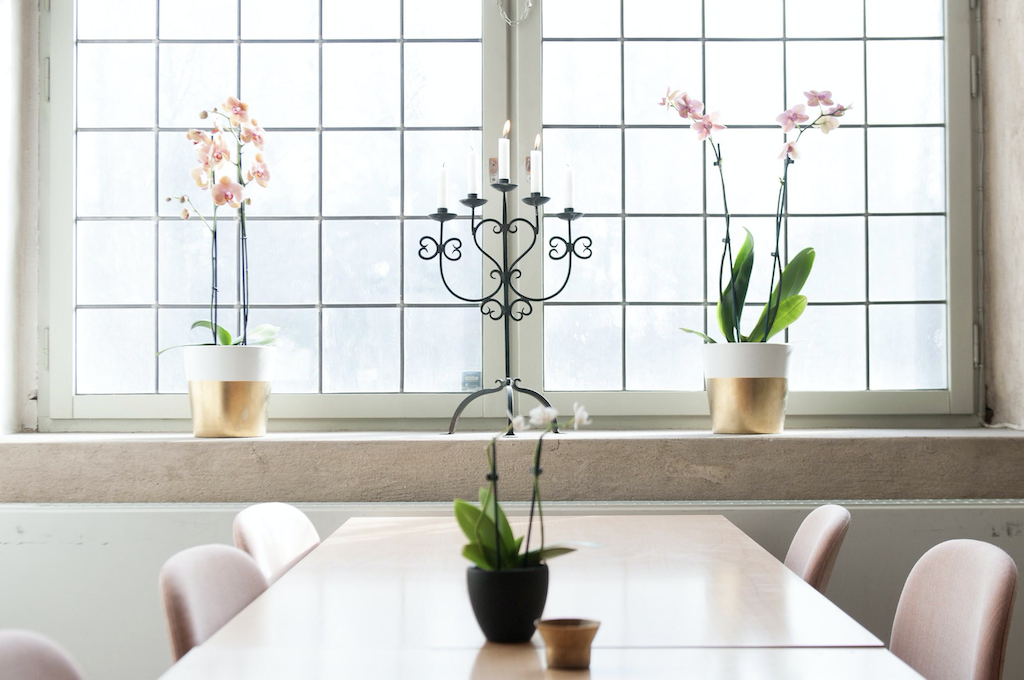
Indoor plants offer an array of benefits. They are a great addition for either homes, restaurants, vacation rentals and even offices. Besides improving a home’s aesthetics, they clean the air by breathing in the carbon monoxide that you exhale and breathing out oxygen that you require. In addition, being around greenery has a way of boosting your moods and calming your mind, reducing stress in the process. If you work from home, filling your home office with indoor plants helps in your creativity and concentration, which are crucial in increasing your productivity. To add up to that peace and quiet, you can also invest in some soundproofing materials, and create the perfect home office, where outside noise will not be a concern.
In order to reap these benefits, however, you need to be able to provide your indoor plants with the right requirements. Different plants have different needs, so you need to know your plants well if you want to give them optimal care. Here is how you create a plant loving home for your plants.
Lighting
Plants need light to photosynthesize. Your home needs to provide enough light for your plants to complete this important process. If you have a southern, or a western facing window, let it have an adequate amount of light. If not, you might need to consider adding one in your next home remodeling. Home remodeling contractors Olympia WA are ready to make your home plant loving. However, the lack of one should not dim your love to have indoor plants, there are several workarounds that you can employ to ensure that your plants are getting enough light.
You can provide your plants with artificial light by investing in quality LED Grow Lights. Their technology mimics the sun, to provide the plants with a full spectrum of light. You can also take advantage of the fact that light reflects back to increase natural lighting. Paint the walls near a window with a light color, and then position the plants opposite of such walls. When the light from the window hits the wall, it will reflect back to the plant. You can also place mirrors where your house gets natural light. The mirror will reflect the light to a plant placed opposite it.
Humidity
Ideally, plants need about 40% humid levels at the very least in order to thrive. This is because they lose moisture through their pores when they breathe. This loss is especially high when the air surrounding it is dry. At times, the water they get through the roots when you water them fails to match up the moisture loss, weakening the plants. In addition, most houses don’t meet this requirement, and it is even worse in hot weather where people need to use air conditioning. On the other hand, people heat up the homes in cold weather, further drying up the air.
That is why you need to prepare your home to offer the plants the required humidity level. You can adjust the humidity level in a home by running a humidifier. Invest in a humidifier in preparation for this work. Alternatively, moving your plants to rooms with high humidity levels such as the kitchen or bathroom does the trick. Consider a kitchen remodeling project to create a good space near the sink where you can place your plants for a few hours every day.
Air circulation
Plants grown in closed environments have a higher risk of getting diseases if there is no proper circulation of air. Even as you prepare for indoor plants, you need to make sure that your house has good ventilation for air circulation. Large windows also allow air in and out removing toxins and excess heat responsible for diseases. Consider enlarging your windows where you plant to place your plants. In addition, invest in a small fan to aid in air circulation.
Temperature
Generally, plants need a temperature range of 18 degrees Celsius (65 deg. F) to 24 degrees Celsius (75 degrees F) during the day. At night, they need it to be cooler by about 3-5 degrees Celsius. If you have a thermostat, it is important that you set the temperature levels to these levels. You can also run a fan or air conditioner to help regulate the temperatures.
Conclusion
As said earlier, each indoor plant has its own set of requirements. Before bringing in a plant, it is important to first assess your home, to make sure that it can provide all the requirements. You don’t want to be frustrated when your plants don’t thrive as you would want them to. The good thing, however, is that there is always a workaround for each requirement.
